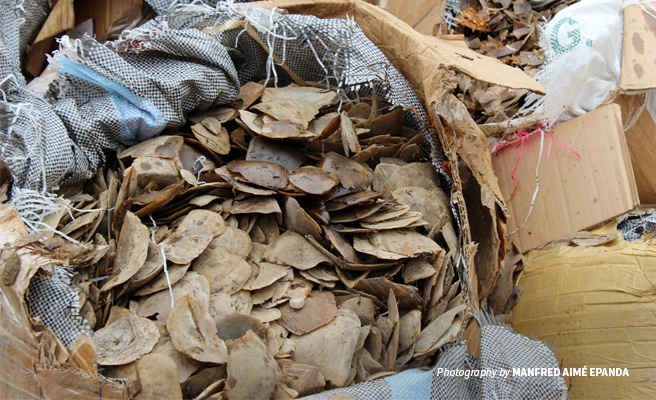The Impact Of Summer Hailstorms On Residential Landscapes

Table of Contents
Assessing the Damage After a Summer Hailstorm
After the storm has passed, a thorough assessment is crucial for determining the extent of the damage and prioritizing repair efforts. This will also help in filing insurance claims if necessary. Remember to document everything with photographs.
Evaluating Plant Damage
Hailstones can cause significant damage to plants of all sizes. A detailed inspection is necessary to identify the full extent of the harm.
- Inspect all plants: Carefully examine each plant for broken stems, bruised leaves, damaged flowers, and overall structural weakness.
- Note severity: Record the severity of the damage for each plant. Use a scale (e.g., minor, moderate, severe) to categorize the injury. This will aid in prioritizing your repair efforts.
- Prioritize: Focus your immediate attention on plants with the most significant damage. These will need the quickest attention to prevent further deterioration.
- Photograph for insurance: Take detailed photographs of the damaged plants from multiple angles. This documentation is invaluable when submitting an insurance claim.
Examining Tree Damage
Trees, especially young or vulnerable ones, are particularly susceptible to damage from summer hailstorms. The impact of large hailstones can cause significant structural weakness.
- Check for broken branches: Carefully inspect the tree's branches for any breaks or fractures. Note the size and location of any broken branches.
- Inspect for stripped bark: Look for areas where the hail has stripped away the bark, exposing the underlying wood. This can lead to infection and further damage.
- Identify deep wounds: Note any deep wounds or gashes in the tree's trunk or branches. These injuries can provide entry points for diseases and pests.
- Assess risk of falling branches: Evaluate the risk of falling branches posing a danger to property or people. Large trees with extensive damage may require professional assessment.
Assessing Lawn Damage
While seemingly minor compared to tree and plant damage, hail can significantly impact the long-term health of your lawn.
- Check for flattened grass: Examine your lawn for areas where the grass has been flattened or severely bruised by the hail.
- Inspect for exposed soil: Note any areas where the hail has stripped away the topsoil, exposing the underlying soil.
- Look for root damage: Assess the extent of root damage. Severe hailstorms can damage the root system, leading to grass browning and die-off.
- Note affected areas: Identify and note the areas of your lawn that have been most severely affected by the hailstorm. This will help you plan your repair strategy.
Repairing Hail Damage to Your Residential Landscape
Repairing hail damage requires a careful and timely approach. While some repairs can be tackled by homeowners, others may necessitate professional assistance.
Repairing Plant Damage
Prompt action is critical to increase the chance of your plants recovering from the hail damage.
- Prune damaged parts: Carefully prune away any broken stems, bruised leaves, or damaged flowers. Make clean cuts to prevent further damage or infection.
- Support damaged plants: Use stakes or other supports to help prop up damaged plants that are leaning or unstable.
- Water thoroughly (but not excessively): Provide adequate water to help plants recover, but avoid overwatering, which can encourage root rot.
- Use fungicides: Apply a fungicide to any wounds or damaged areas to prevent fungal infections.
- Add mulch: Mulch around the base of damaged plants to help retain moisture and protect the roots.
Repairing Tree Damage
Repairing tree damage often requires professional arborists due to the complexity and potential safety hazards involved.
- Prune minor damage: For minor branch damage, carefully prune away the broken or damaged sections, making clean cuts to prevent disease.
- Professional removal of large branches: Larger branches, particularly those that pose a safety risk, should be removed by a qualified arborist.
- Apply tree wound sealant: Apply a tree wound sealant to any large cuts or wounds to protect the exposed wood from infection.
Repairing Lawn Damage
Repairing lawn damage helps restore your lawn's aesthetic appeal and promotes healthy regrowth.
- Rake away debris: Gently rake away any debris such as broken branches, leaves, or other plant matter.
- Overseed damaged areas: Overseed any damaged areas to promote rapid regrowth and fill in bare patches.
- Water deeply and regularly: Water your lawn deeply and regularly to encourage root growth and healthy recovery.
- Apply fertilizer (lightly): Consider applying a light application of fertilizer to boost the lawn's recovery.
Preventing Future Summer Hailstorm Damage
While you can't control the weather, you can take proactive steps to reduce the impact of future summer hailstorms.
Protective Measures
These preventative steps can significantly lessen the impact of future hailstorms.
- Use hail netting: Protect vulnerable plants with hail netting, a lightweight mesh fabric that offers a barrier against hailstones.
- Plant hail-resistant varieties: Choose plants that are known for their resilience to hail damage.
- Install a windbreak: Consider installing a windbreak, such as a hedge or fence, to help reduce the force of the wind and the impact of hailstones.
- Relocate susceptible plants: Move susceptible plants to more sheltered areas of your property.
- Regular pruning: Maintain healthy plants through regular pruning. Stronger plants are better equipped to withstand hail damage.
Monitoring Weather Forecasts
Staying informed about weather forecasts is crucial for mitigating the risks posed by summer hailstorms.
- Stay updated: Regularly check weather forecasts and be aware of any severe weather alerts.
- Take action: Take preventative steps, such as covering vulnerable plants, when a hailstorm is predicted.
Conclusion
Summer hailstorms can cause considerable damage to residential landscapes. By carefully assessing the damage, implementing appropriate repair strategies, and taking preventative measures, you can minimize the impact of these powerful storms and protect your valuable plants and trees. Remember to always prioritize safety, and seek professional assistance when dealing with extensive damage, especially concerning trees. Don't underestimate the power of preventative actions to mitigate future damage from devastating summer hailstorms. Proper planning and action can make all the difference in maintaining a healthy and vibrant landscape. Prepare for those unexpected summer hailstorms and protect your precious outdoor investment.

Featured Posts
-
 Expert Ufc 315 Predictions Analyzing The Upcoming Fights
May 12, 2025
Expert Ufc 315 Predictions Analyzing The Upcoming Fights
May 12, 2025 -
 Marvels Cancellation Of Henry Cavill Show A Potential Benefit
May 12, 2025
Marvels Cancellation Of Henry Cavill Show A Potential Benefit
May 12, 2025 -
 Celtics Path To Division Title A Blowout Win
May 12, 2025
Celtics Path To Division Title A Blowout Win
May 12, 2025 -
 Beatrices Perspective The Prince Andrew And Fergie Divorce
May 12, 2025
Beatrices Perspective The Prince Andrew And Fergie Divorce
May 12, 2025 -
 L Heritage Controverse De Cobra Sylvester Stallone Et Ses Regrets Sur Le Film D Action Des Annees 80
May 12, 2025
L Heritage Controverse De Cobra Sylvester Stallone Et Ses Regrets Sur Le Film D Action Des Annees 80
May 12, 2025
Latest Posts
-
 Uk Wildfires Rarest Wildlife Torched Pushed To Extinction
May 13, 2025
Uk Wildfires Rarest Wildlife Torched Pushed To Extinction
May 13, 2025 -
 Calificare In Optimile Europa League Pentru As Roma Porto Invinsa Cu 3 2
May 13, 2025
Calificare In Optimile Europa League Pentru As Roma Porto Invinsa Cu 3 2
May 13, 2025 -
 Persipura Jayapura Hancurkan Rans Fc 8 0 Di Playoff Liga 2 Puncaki Klasemen Grup K
May 13, 2025
Persipura Jayapura Hancurkan Rans Fc 8 0 Di Playoff Liga 2 Puncaki Klasemen Grup K
May 13, 2025 -
 Raziskovanje Romske Glasbe V Prekmurju Muzikanti In Njihove Pesmi
May 13, 2025
Raziskovanje Romske Glasbe V Prekmurju Muzikanti In Njihove Pesmi
May 13, 2025 -
 As Roma 3 2 Cu Fc Porto Calificare Meritata In Faza Urmatoare A Europa League
May 13, 2025
As Roma 3 2 Cu Fc Porto Calificare Meritata In Faza Urmatoare A Europa League
May 13, 2025
